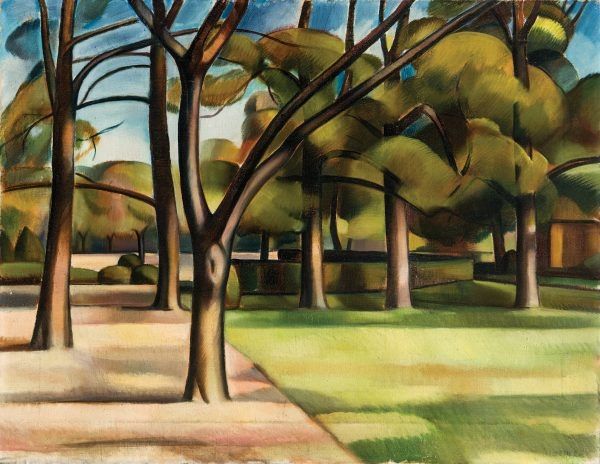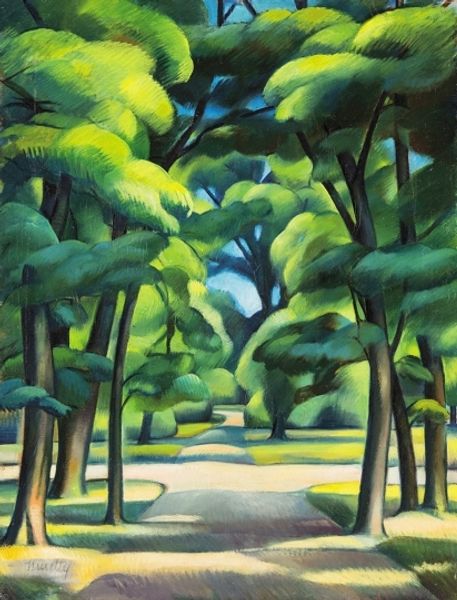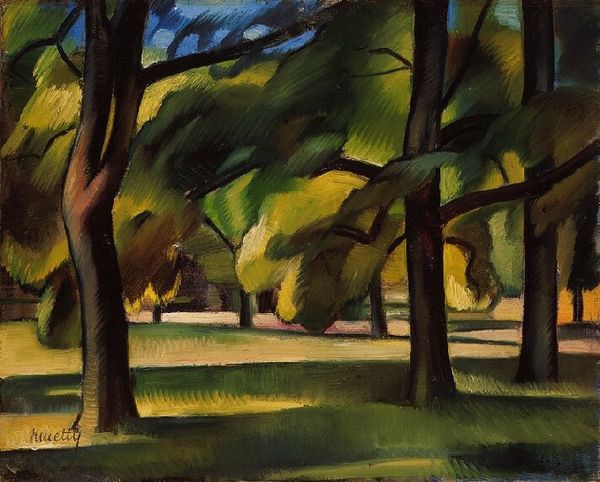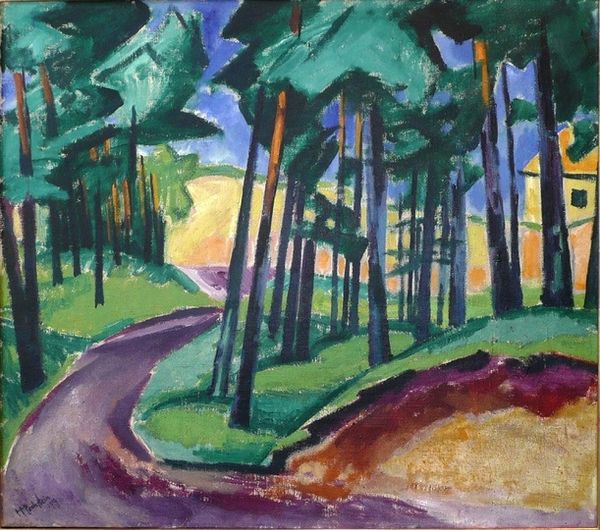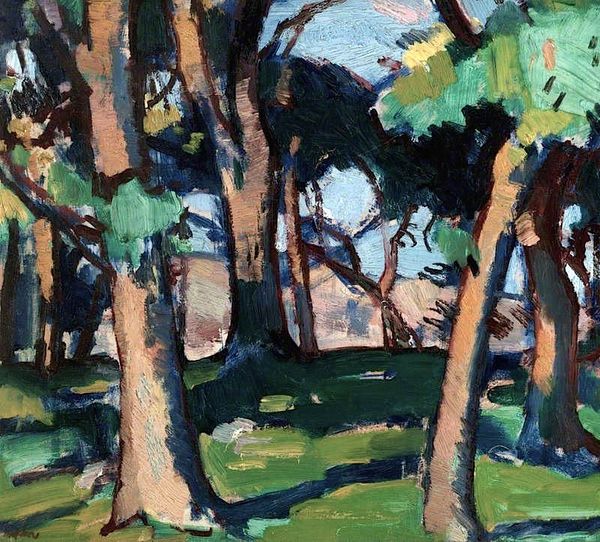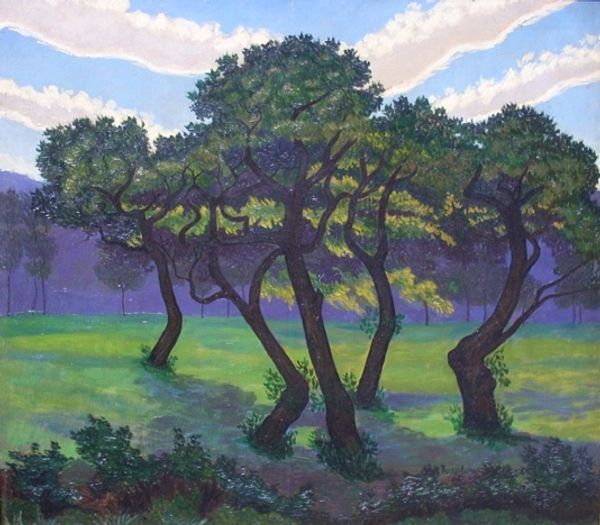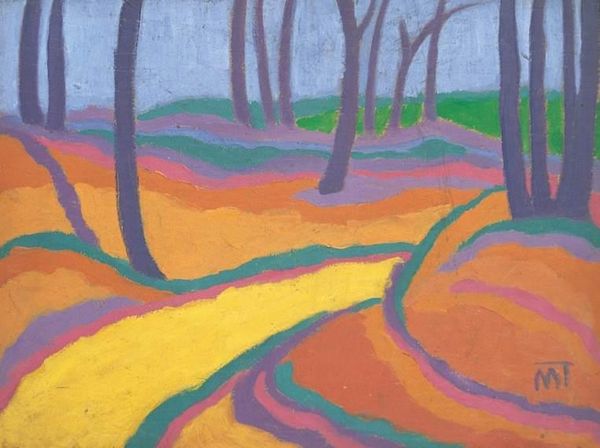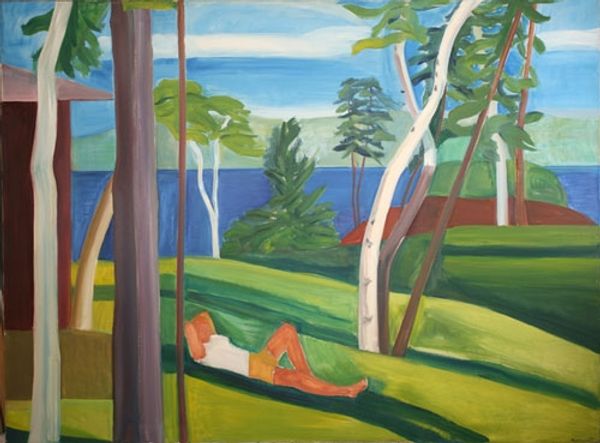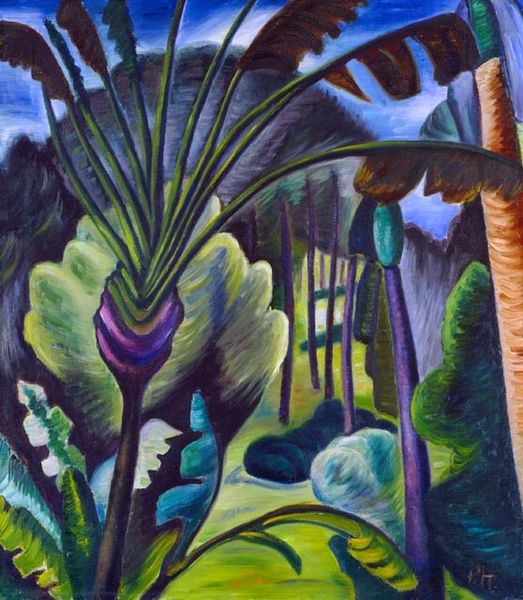
painting, plein-air, oil-paint
#
cubism
#
painting
#
plein-air
#
oil-paint
#
landscape
#
geometric
#
expressionism
Copyright: Kmetty János,Fair Use
Curator: I’m struck by the cool tranquility of this scene. There’s a stillness, a sort of quiet harmony in the way the artist, János Kmetty, uses these blues and greens. Editor: Absolutely, and those greens feel so emblematic of early 20th century utopian aesthetics, especially when contrasted with the geometric treatment of the trees themselves. This painting, entitled "Park Detail with Trees," painted in 1912, uses oil paints to render an abstracted vision of a park, invoking elements of Cubism in its treatment of natural forms. Curator: Right, those stylized, almost hard-edged shapes for the foliage suggest a desire to find order, to impose a kind of idealized geometry onto nature. The symbolic implications of that urge toward order are strong, pointing toward a desire for stability in a rapidly changing world. Editor: I think your observations on the undercurrent of symbolic import are apt. One can understand these compositions as social statements of stability and peace amid a world changing so violently and swiftly during this era, particularly concerning artistic production. Curator: There's a naive simplicity in Kmetty's use of light that, for me, contrasts so powerfully with the formal complexity. He achieves a balance, using geometric abstraction and bright shades, calling the viewer into reverie. Editor: I would add the scale also has bearing here, creating a certain tension. The intimacy and the public role of landscape, and painting landscape during this early Expressionist era. It gives a unique position within modernism, which sought after those very tensions and reconciliations between abstraction and reality. Curator: Indeed. This painting is much more than a simple landscape, I see within the symbols and composition a statement of identity and a profound exploration of cultural memory during tumultuous times. Editor: Well put. It demonstrates that these pastoral paintings in the modern age are indeed sites of powerful expression, deeply intertwined with public hopes and anxieties of this specific cultural moment.
Comments
No comments
Be the first to comment and join the conversation on the ultimate creative platform.
